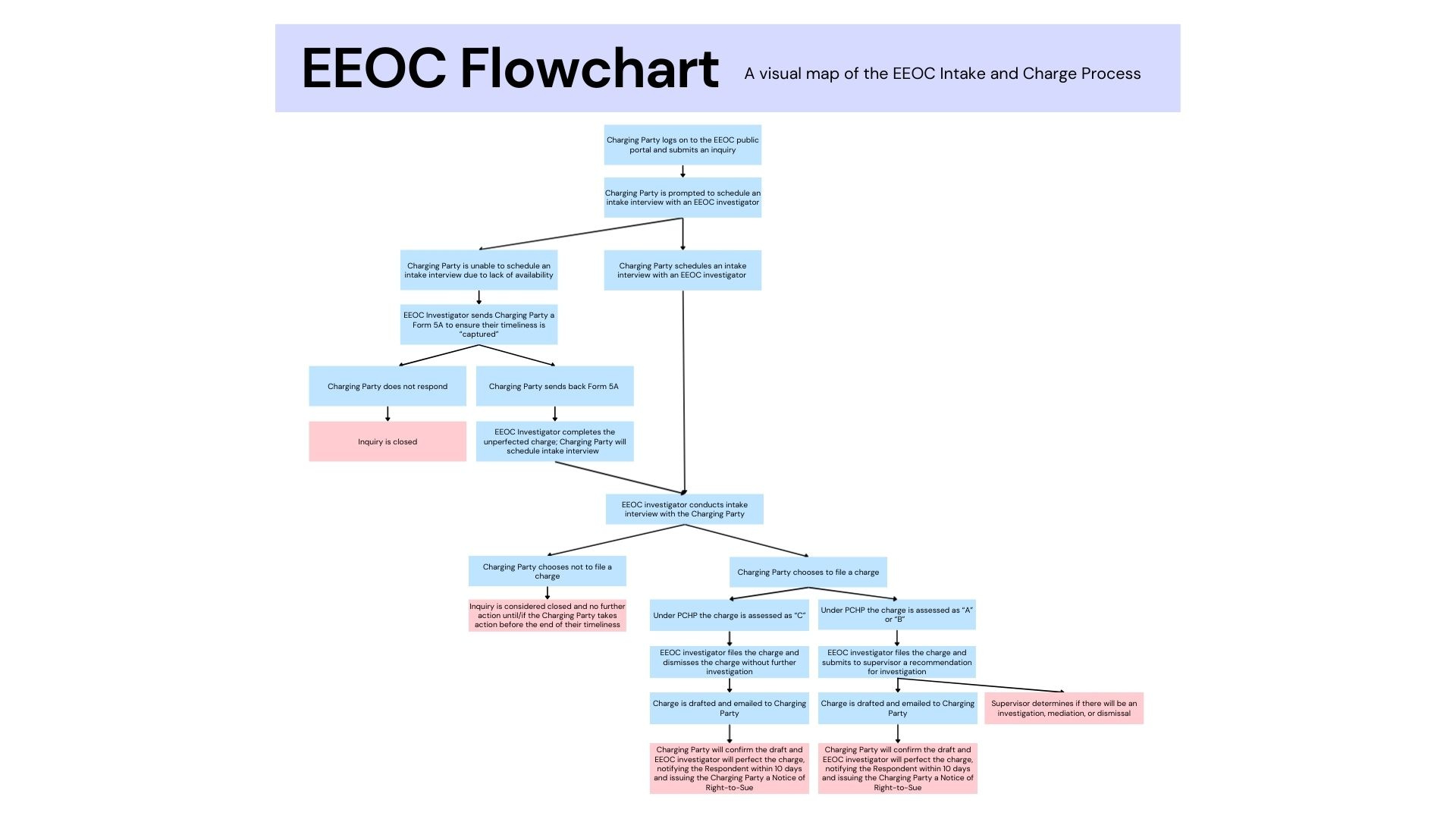LIA Weeks 2-3
Another part of the background about the EEOC that I had to learn is what they actually ‘do.’ While I knew that they had the power of enforcement of the statutes I learned about previously, I was still unsure of what that enforcement actually looked like. From their creation, “the EEOC has the authority to investigate charges of discrimination against employers who are covered by the law. Our role in an investigation is to fairly and accurately assess the allegations in the charge and then make a finding.” The way that this happens is through the intake process. I have tried to recreate the basic layout of the process that the EEOC undergoes through this flow-chart:

To explain the flow chart, the process begins with an individual who feels they have been the victim of some sort of employment discrimination based on a protected class (i.e. not hired because of their race, religion, sex, gender, etc; fired because of their race, gender, sexual orientation, age etc; not paid fairly or not given a promotion). We call this person a Potential Charging Party (PCP). They are ‘potential’ because not until the EEOC gets involved are they a charging party. The PCP then contacts the EEOC via an online portal to set up an intake interview. The Cleveland Field Office of the EEOC has many more cases that need to be dealt with than investigators able to do all of the intake interviews. Because of this, there is generally a large back-log of cases and I will later learn what the office does in those circumstances to ensure that everyone has the right to tell their story and go through the process. After the EEOC has received the PCP’s information and scheduled an intake interview, the PCP will speak with an EEOC investigator during that interview. This interview gives the PCP to tell their full story, make clear what their claims are, and specify under which statute they are saying there is discrimination. The investigator will ask many questions of the PCP to ensure they have the story completely correct and know all the necessary information in order to make their determination. Thought everyone is guaranteed the right to speak with the EEOC and be given a notice of rights to sue, the EEOC has full discretion on which cases it decides to investigate. At the conclusion of this interview, the investigator will use the EEOC’s Priority Charge Handling Procedure (PCHP) in order to classify the case, determining if the case will be investigated by the commission or if the case will be closed and the individual will be given a notice of rights to sue (NRTS). This notice gives that individual the right to file a claim in federal court against their employee within 90 days of receiving that document. It is in this intake process that I was going to be taking part in and so in order to ensure that I did the best that I could for the people who believed they had been discriminated against, I had to shadow many intake interviews with full time investigators. These cases were very interesting, lengthy, and complicated. However, despite the complexity, the best investigators were able to distill the aspects of the statute they were looking at down to a few questions. In other words, they knew exactly what questions to ask to see if the case had bearing (would be investigated) or not. A note here is that the PCHP classifies cases on an A1, A2, B, C scale with C being a case is dismissed; B being a case needs more information to make a determination; A1 being a strong case for discrimination but unlikely for litigation; A2 being a strong case for discrimination and likely for litigation.
Please sign in
If you are a registered user on Laidlaw Scholars Network, please sign in